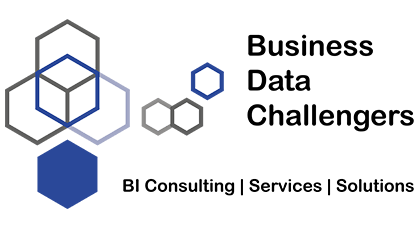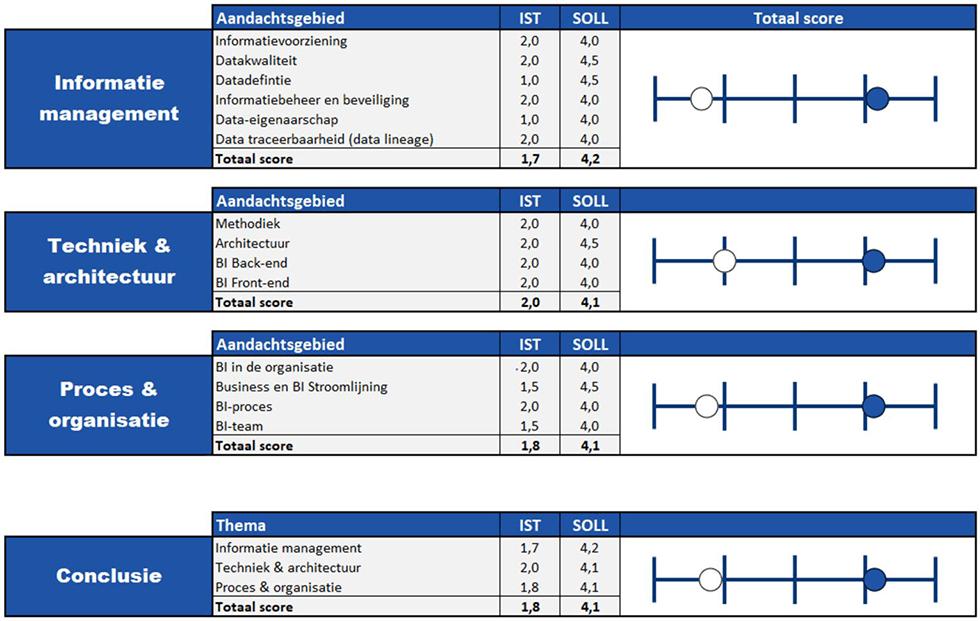
DATA HEALTH SCAN
“A data-driven organization is an objective organization”
Towards a data-driven organization
Does your organization know the value of data? Every week we speak to many customers who are making a transition to a data-driven organization or are planning to do so. We are regularly asked: "A data-driven organization, what does that mean and how do I take the first step?"
With our Data Health Scan we describe the current situation, analyze the bottlenecks and define the ambition level in the field of data-driven work. Following an IST and SOLL position, we perform a GAP analysis and draw up a road map for the future.
WHY
A data-driven organization acts on the basis of (objective) facts derived from data. These facts provide insight into what is happening within the organization. Trends are also derived from this, allowing one to anticipate changes and make the right investments. Data-driven work contributes to a sound risk management policy, which guarantees the continuity of your organization. Data-driven organizations work effectively and efficiently.
How
Based on the experience and expertise of our consultants at various companies, Business Data Challengers has developed its own Data Health Scan. With this, we map out the current maturity level (IST) and the ambition level (SOLL) in close consultation with the employees in your organization. The frequency of feedback is determined in consultation.
We interview employees in the various organizational layers and analyze relevant documentation. For an efficient process, the necessary information for the IST and SOLL position is collected largely simultaneously. Bottlenecks and frustrations of the IST position are an important source for determining the SOLL position.
What
To record and frame the collected information, we use our own developed BDC maturity model. This model was created by combining the knowledge and experience of our consultants with existing (theoretical) models. To substantiate and map the IST situation of the mentioned themes, we use SWOT analyses.
Our approach focuses on three themes
- Information management
Areas of attention such as information provision, data quality, data definition, information management and security, data ownership and data traceability fall within this theme.
- Organization & process
The organizational research focuses on your organizational culture and structure, implemented processes, the importance and use of data and expertise of your employees. The type of organization and employees is important for determining the level of ambition.
- Technology & architecture
The technical research focuses on the systems used, software (back end and front end tooling) and the design of the data provision (methodology and architecture).
We will immediately provide feedback on risks and quick wins identified during the investigation so that your organization can get started on them.
Closing the gap
With our Data Health Scan we describe the current situation, analyze the bottlenecks and define the ambition level in the field of data-driven work. Following this IST and SOLL position, we perform a GAP analysis and draw up a road map for the future.
Our advice describes the connection of IST and SOLL position and the strategy for 'Closing the GAP'. No pages thick offer filled with standard talk, but a plan in which you recognize yourself and in which you have confidence.
If desired, we will work with you to create a data-driven mission and vision for your organization. Completely ready for the future. In doing so, we will answer the question of why we believe that the level of ambition in question fits your organization.
The BDC model assumes 5 maturity levels:
- Level 1: Unstructured – Unconscious: Data is only available in the form of standalone reports, which are developed internally or at the request of individual users or user groups
- Level 2: Reactive – Operational: Data policy is not filled in and not enforced. Due to the unstructured process it is not clear how reliable the information provided is.
- Level 3: Structured – Tactical: Information products are developed in response to the information needs of specific user groups. Within the organization, there is an awareness of the need for reliable information.
- Level 4: Proactive – Strategic:The importance of good data quality has been recognized and policy is being implemented on this. Definitions and performance indicators (KPIs) are drawn up by the organization, which are processed into information products. These information products support the decision-making process and help to steer the organization as a whole.
- Level 5: Innovative – Visionary: The organization uses data as a key strategic asset. Data governance is embedded as a quality assurance process within the organization. This level is generally reserved for fully data-driven organizations that have the resources to invest in it.

